1. 安装轻量级网络仿真工具Mininet
①安装git
sudo apt install git
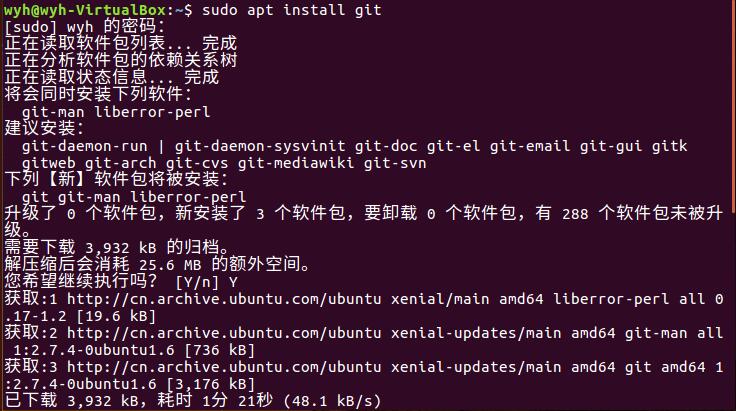

②安装github上的Mininet
git clone https://github.com/mininet/mininet.git
cd mininet/util
./install.sh



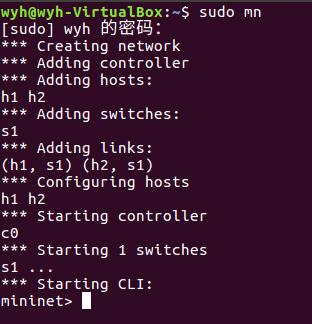
2. 用字符命令搭建如下拓扑,要求写出命令
sudo mn --topo linear,3

sudo mn --topo tree,fanout=3,depth=2
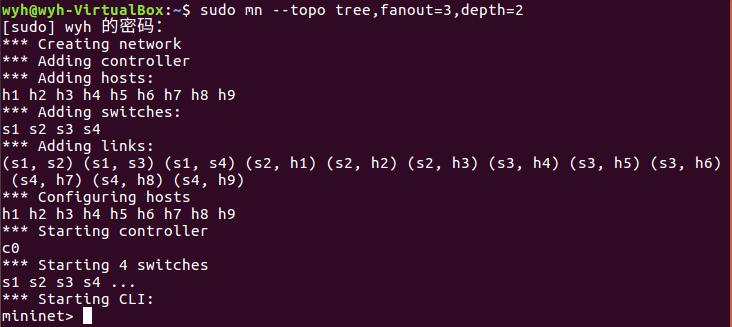
3. 利用可视化工具搭建如下拓扑,并要求支持OpenFlow 1.0 1.1 1.2 1.3,设置h1(10.0.0.10)、h2(10.0.0.11)、h3(10.0.0.12),拓扑搭建完成后使用命令验证主机ip,查看拓扑端口连接情况。
①命令行打开可视化工具
cd mininet/examples
sudo ./miniedit.py

②可视化搭建
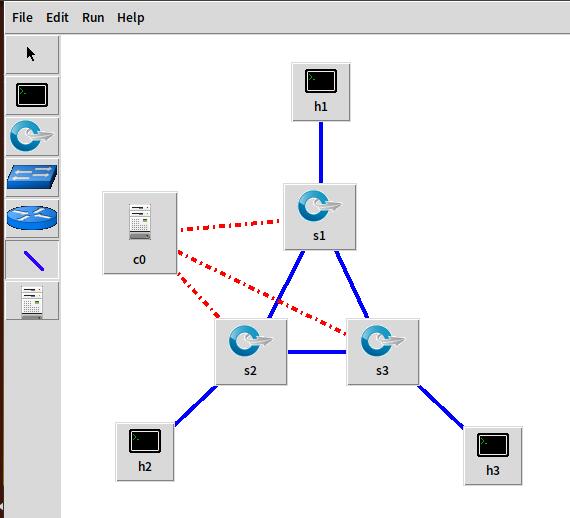
③IP地址填写
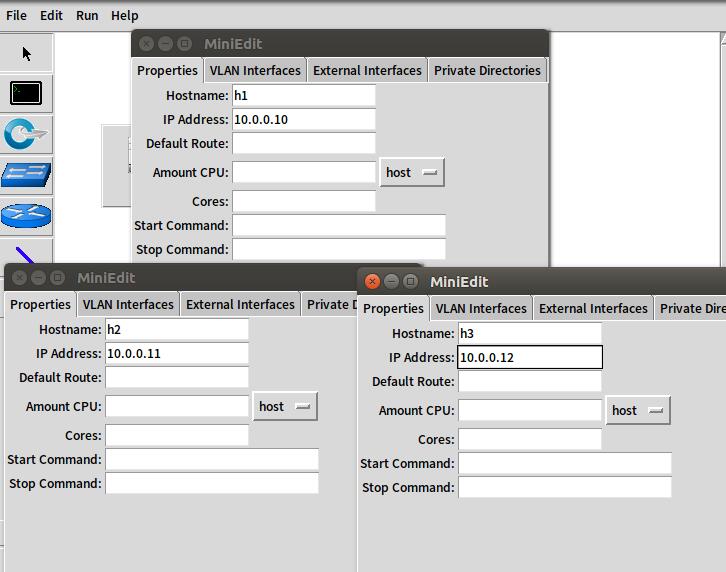

④设置支持OpenFlow 1.0 1.1 1.2 1.3
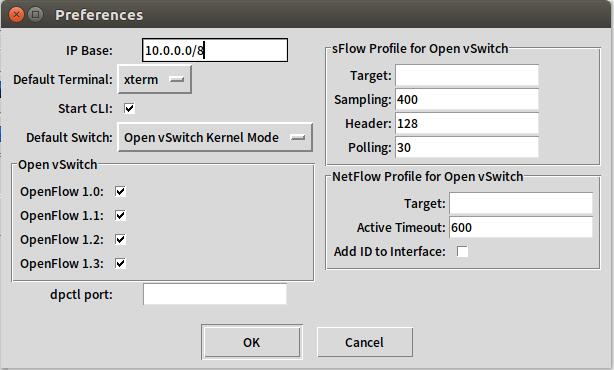

⑤Run运行
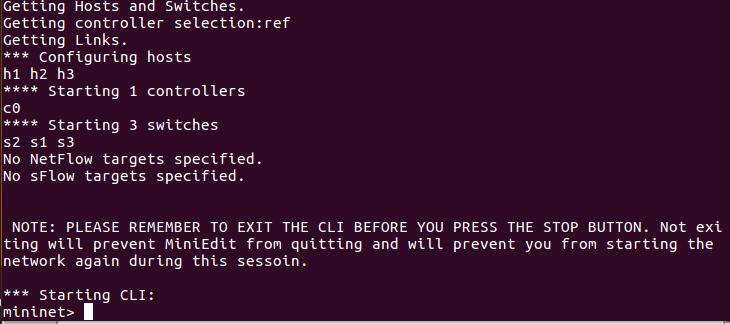
⑥使用net查看拓扑

⑦使用xterm语句验证主机ip,查看拓扑端口连接情况

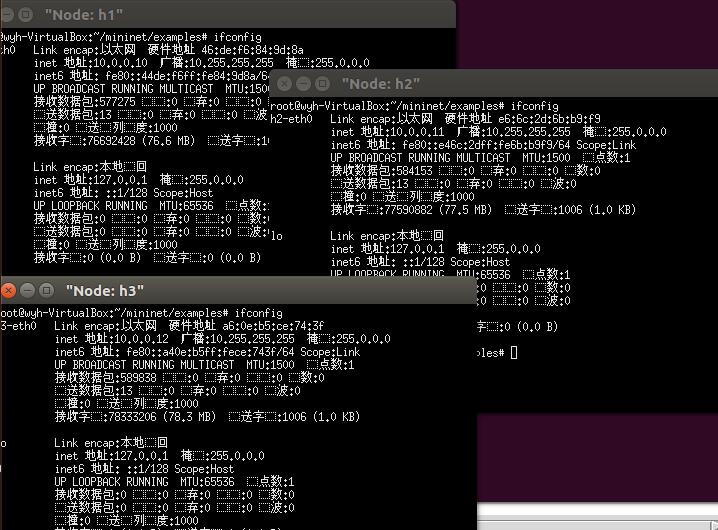
4.利用Python脚本完成如下图所示的一个Fat-tree型的拓扑(交换机和主机名需与图中一致,即s1s6,h1h8,并且链路正确,请给出Mininet相关截图)
python代码
from mininet.topo import Topo
from mininet.net import Mininet
from mininet.node import RemoteController,CPULimitedHost
from mininet.link import TCLink
from mininet.util import dumpNodeConnections
class MyTopo( Topo ):
"Simple topology example."
def __init__( self ):
"Create custom topo."
# Initialize topology
Topo.__init__( self )
L1 = 2
L2 = L1 * 2
c = []
a = []
# add core ovs
for i in range( L1 ):
sw = self.addSwitch( 'c{}'.format( i + 1 ) )
c.append( sw )
# add aggregation ovs
for i in range( L2 ):
sw = self.addSwitch( 'a{}'.format( L1 + i + 1 ) )
a.append( sw )
# add links between core and aggregation ovs
for i in range( L1 ):
sw1 = c[i]
for sw2 in a[i/2::L1/2]:
self.addLink( sw2, sw1 )
#add hosts and its links with edge ovs
count = 1
for sw1 in a:
for i in range(2):
host = self.addHost( 'h{}'.format( count ) )
self.addLink( sw1, host )
count += 1
topos = { 'mytopo': ( lambda: MyTopo() ) }
①命令行运行
sudo mn --custom fattree.py --topo mytopo --switch ovsk, protocols=OpenFlow10

②使用net查看拓扑




